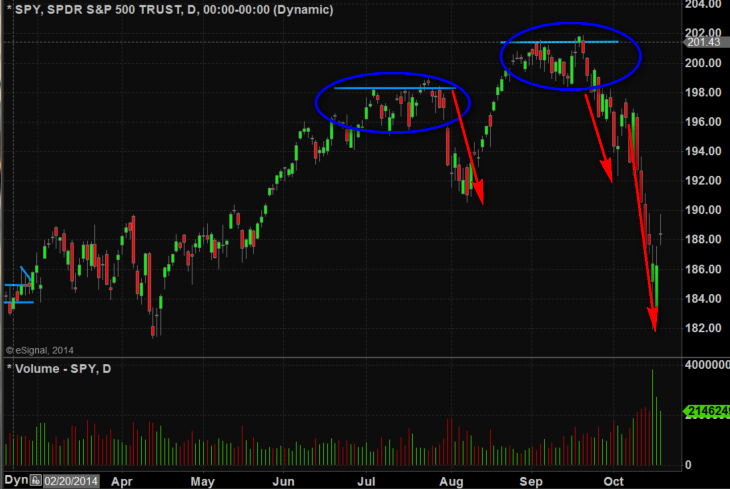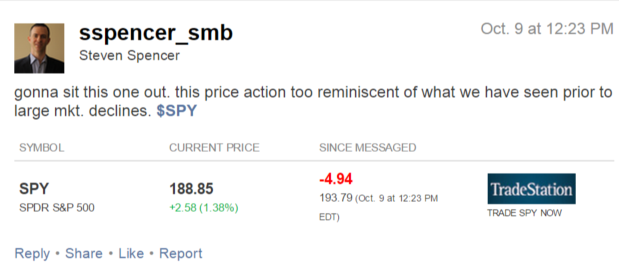It is extremely difficult to identify a top in an up-trending market, however, a very useful and profitable exercise for traders is to identify conditions that may lead to a market pull back. So whereas the typical “top caller” invited to opine on CNBC has no idea whether the market is at a top professional traders focused on price action, sentiment, and the market’s reaction to news will identify times when the market favors a pull back and profit.
Take a look at the following chart. It shows price patterns in the SPY that were very similar prior to the start of a market pull back. The first circled area preceded the pull back in August and the second preceded last week’s market pullback. What we see in the chart is two separate periods of consolidation that briefly made new highs before falling back into a prior trading range. That was the first signal we could experience a market pull back. That signal was confirmed each time with a strong thrust below the circled areas. The most recent pull back happened to also signal a shift in market “regime” (HT to @steenbab for this terminology) that had been in place from November 2011 through September 2014.
The price action October 8th and 9th which followed the initial SPY pull back to 192.30 is what caused me to liquidate almost all of my long positions and make the following remark on Stocktwits. By getting out of my longs below SPY 195 it made it much easier for me to focus on trading the expanding volatility and not worry about my positions potentially being ripped to shreds.
When the market is signaling that we may be about to enter into a significant pullback we talk to our traders about being more careful on long setups and being more aggressive with shorts. For those holding swing books, we suggest lightening up on longs and/or increasing short hedges. When the market enters a new “regime” of high volatility we move from focusing on individual names to spending most of our energy trading the market via various ETFs that give us the liquidity needed to take advantage of quick moves and reversals in the market. My next post will focus on this process.
Steven Spencer is the co-founder of SMB Capital and SMB University which provides trading education in stocks, options, forex and futures. He has traded professionally for 18 years. His email address is: [email protected].
*Steven Spencer is currently long BABA, EXPE, SCOK, SCTY, TWTR, WAG, X and short GPRO, LAKE



